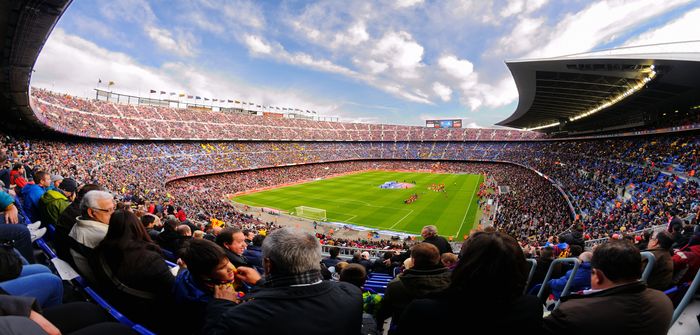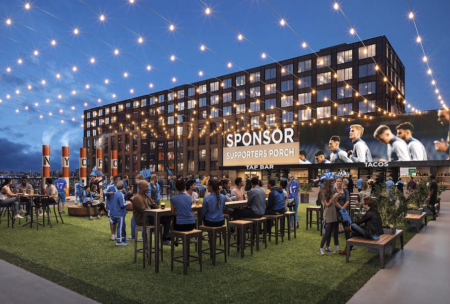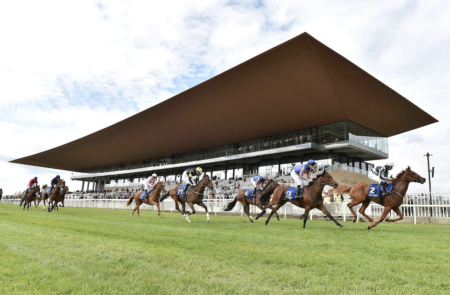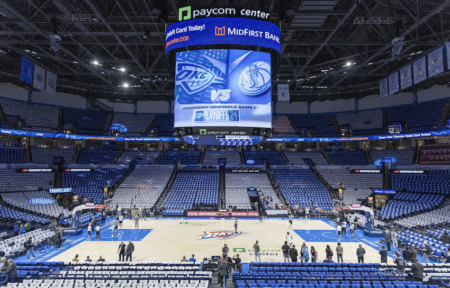The Espai Barca project, which will see an expansion and upgrades to FC Barcelona’s Nou Camp stadium as well as a new 12,500 multipurpose venue, is bringing about a construction revolution by being built using the latest 4D mixed reality technology.
Computer-aided designs have long been in use by architects and engineers, but those working on the €600m (US$702m) build in Barcelona, Spain, are employing the next generation of design equipment with futuristic augmented and virtual reality technology.
Using a pair of Microsoft HoloLens glasses and Synchro software from Bentley Systems, multiple users on the project are able to virtually jump into the design to touch and manipulate the construction model.

“Espai Barca is a multi-year project that aims to deliver one of the best sports facilities in the world. Since the beginning of the project, our team has been clear we wanted to use the latest technology,” said Antonio Hernandez, schedule manager, Espai Barca
“The use of 4D construction helps us in many different ways. In the way we design, we coordinate the work, and we deliver the final product.”
The Nou Camp is 60 years old and has undertaken only two renovations in that time – the last being in 1994. With a capacity of 99,354, it is Europe’s largest stadium, and with the new plans, this is going to increase to 105,000 when completed by 2021/2022.

Included in the plan is a more vertical first tier for improved sightlines, as well as improvements to the second and third tiers with improved comfort and accessibility. New premium and VIP seats will be installed, underground parking for 3,500 vehicles will be included (and an additional exclusive parking area for players), new restaurants, and most notably, a new roof will change the entire look of the iconic stadium.
Adjacent to the stadium will be a new Palau Blaugrana, which will hold up to 12,500 spectators for sporting events such as basketball and concerts.
The entire project is a huge task, which is why those involved in the project looked to employ cutting-edge technology to visualize and manage the construction.
“Synchro Software is a 4D construction simulation and planning platform. The fourth dimension adds this element of time in a way that you can actually visualize, see it and believe in what your plan is,” said Greg Demchak, technical architect, Synchro Software.
“Now we are getting into how to interact with even the site cameras that are monitoring the job site. We use all this information that is coming to FC Barcelona and mash that up against the Synchro 4D plan model to see if we are ahead or behind schedule and even use things like vision systems and machine learning to help predict that.”
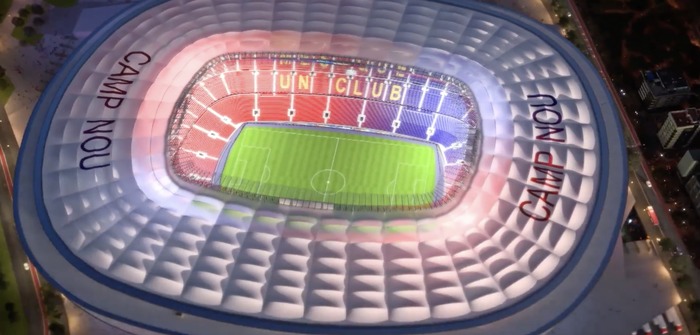
The software shows every element of the stadium build – from concrete work to lighting, plumbing and electrics. Using the mixed reality headset, users can physically touch items with their hands rather than having to use a computer mouse or stylus. It allows designers to work collaboratively much more easily and efficiently, as well as to find solutions to problems in real time.
Microsoft launched HoloLens two years ago and has seen a great uptake for enterprise use. Future construction projects, sporting stadia and beyond, will be able to see how the mixed reality solution works for FC Barcelona and could pave the way for more mixed reality technology in future builds.
“We’re not only leveraging the power of HoloLens; we’re also combining the power of the cloud, cognitive services and our IoT technology to help bring out the next level of industrial revolution,” said Nancy Li, global mixed reality partnerships, Microsoft.
August 1, 2018


